Kun Lu
Accuracy of Wearable ECG Parameter Calculation Method for Long QT and First-Degree A-V Block Detection: A Multi-Center Real-World Study with External Validations Compared to Standard ECG Machines and Cardiologist Assessments
Feb 21, 2025Abstract:In recent years, wearable devices have revolutionized cardiac monitoring by enabling continuous, non-invasive ECG recording in real-world settings. Despite these advances, the accuracy of ECG parameter calculations (PR interval, QRS interval, QT interval, etc.) from wearables remains to be rigorously validated against conventional ECG machines and expert clinician assessments. In this large-scale, multicenter study, we evaluated FeatureDB, a novel algorithm for automated computation of ECG parameters from wearable single-lead signals Three diverse datasets were employed: the AHMU-FH dataset (n=88,874), the CSE dataset (n=106), and the HeartVoice-ECG-lite dataset (n=369) with annotations provided by two experienced cardiologists. FeatureDB demonstrates a statistically significant correlation with key parameters (PR interval, QRS duration, QT interval, and QTc) calculated by standard ECG machines and annotated by clinical doctors. Bland-Altman analysis confirms a high level of agreement.Moreover,FeatureDB exhibited robust diagnostic performance in detecting Long QT syndrome (LQT) and atrioventricular block interval abnormalities (AVBI),with excellent area under the ROC curve (LQT: 0.836, AVBI: 0.861),accuracy (LQT: 0.856, AVBI: 0.845),sensitivity (LQT: 0.815, AVBI: 0.877),and specificity (LQT: 0.856, AVBI: 0.845).This further validates its clinical reliability. These results validate the clinical applicability of FeatureDB for wearable ECG analysis and highlight its potential to bridge the gap between traditional diagnostic methods and emerging wearable technologies.Ultimately,this study supports integrating wearable ECG devices into large-scale cardiovascular disease management and early intervention strategies,and it highlights the potential of wearable ECG technologies to deliver accurate,clinically relevant cardiac monitoring while advancing broader applications in cardiovascular care.
A Sea-Land Clutter Classification Framework for Over-the-Horizon-Radar Based on Weighted Loss Semi-supervised GAN
May 06, 2023

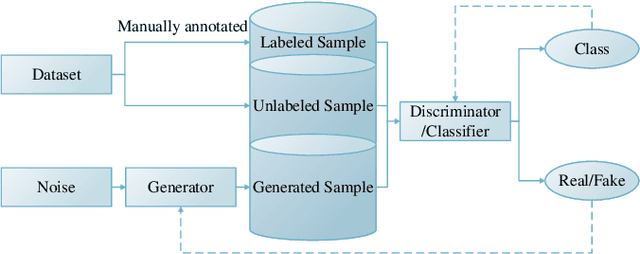
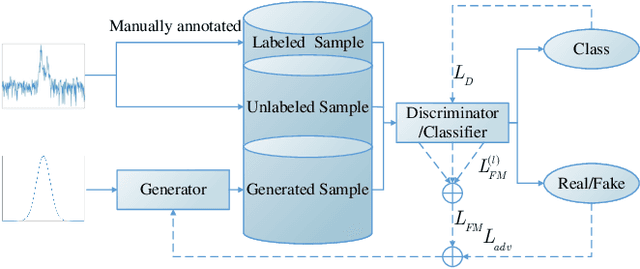
Abstract:Deep convolutional neural network has made great achievements in sea-land clutter classification for over-the-horizon-radar (OTHR). The premise is that a large number of labeled training samples must be provided for a sea-land clutter classifier. In practical engineering applications, it is relatively easy to obtain label-free sea-land clutter samples. However, the labeling process is extremely cumbersome and requires expertise in the field of OTHR. To solve this problem, we propose an improved generative adversarial network, namely weighted loss semi-supervised generative adversarial network (WL-SSGAN). Specifically, we propose a joint feature matching loss by weighting the middle layer features of the discriminator of semi-supervised generative adversarial network. Furthermore, we propose the weighted loss of WL-SSGAN by linearly weighting standard adversarial loss and joint feature matching loss. The semi-supervised classification performance of WL-SSGAN is evaluated on a sea-land clutter dataset. The experimental results show that WL-SSGAN can improve the performance of the fully supervised classifier with only a small number of labeled samples by utilizing a large number of unlabeled sea-land clutter samples. Further, the proposed weighted loss is superior to both the adversarial loss and the feature matching loss. Additionally, we compare WL-SSGAN with conventional semi-supervised classification methods and demonstrate that WL-SSGAN achieves the highest classification accuracy.
Semantics-Empowered Communication: A Tutorial-cum-Survey
Dec 21, 2022



Abstract:Along with the springing up of semantics-empowered communication (SemCom) researches, it is now witnessing an unprecedentedly growing interest towards a wide range of aspects (e.g., theories, applications, metrics and implementations) in both academia and industry. In this work, we primarily aim to provide a comprehensive survey on both the background and research taxonomy, as well as a detailed technical tutorial. Specifically, we start by reviewing the literature and answering the "what" and "why" questions in semantic transmissions. Afterwards, we present corresponding ecosystems, including theories, metrics, datasets and toolkits, on top of which the taxonomy for research directions is presented. Furthermore, we propose to categorize the critical enabling techniques by explicit and implicit reasoning-based methods, and elaborate on how they evolve and contribute to modern content \& channel semantics-empowered communications. Besides reviewing and summarizing the latest efforts in SemCom, we discuss the relations with other communication levels (e.g., reliable and goal-oriented communications) from a holistic and unified viewpoint. Subsequently, in order to facilitate the future developments and industrial applications, we also highlight advanced practical techniques for boosting semantic accuracy, robustness, and large-scale scalability, just to mention a few. Finally, we discuss the technical challenges that shed light on future research opportunities.
Contrastive Monotonic Pixel-Level Modulation
Jul 23, 2022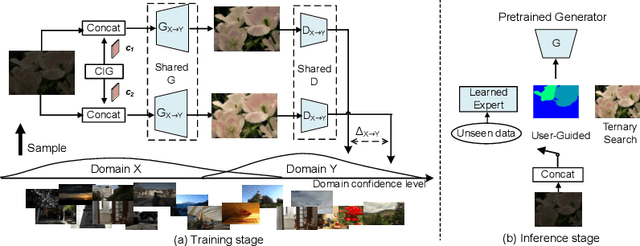
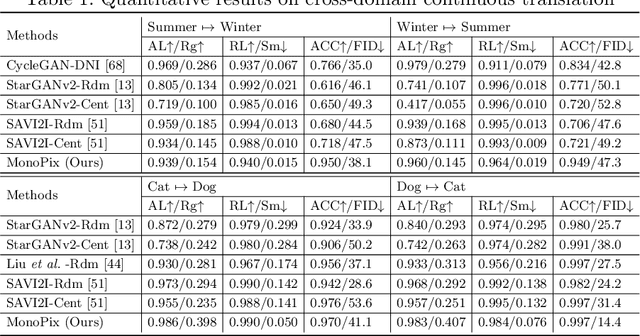


Abstract:Continuous one-to-many mapping is a less investigated yet important task in both low-level visions and neural image translation. In this paper, we present a new formulation called MonoPix, an unsupervised and contrastive continuous modulation model, and take a step further to enable a pixel-level spatial control which is critical but can not be properly handled previously. The key feature of this work is to model the monotonicity between controlling signals and the domain discriminator with a novel contrastive modulation framework and corresponding monotonicity constraints. We have also introduced a selective inference strategy with logarithmic approximation complexity and support fast domain adaptations. The state-of-the-art performance is validated on a variety of continuous mapping tasks, including AFHQ cat-dog and Yosemite summer-winter translation. The introduced approach also helps to provide a new solution for many low-level tasks like low-light enhancement and natural noise generation, which is beyond the long-established practice of one-to-one training and inference. Code is available at https://github.com/lukun199/MonoPix.
Rethinking Modern Communication from Semantic Coding to Semantic Communication
Oct 16, 2021
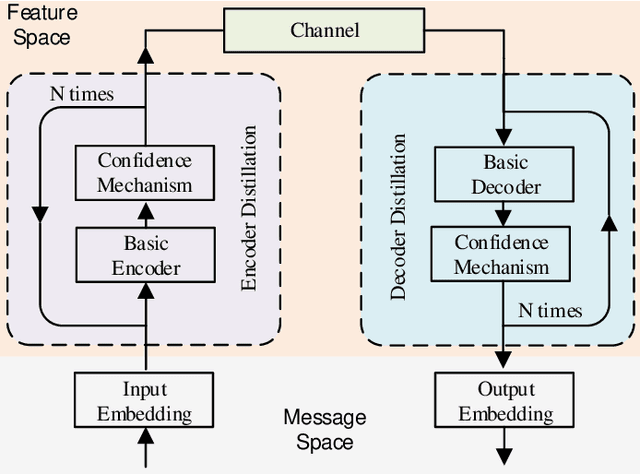

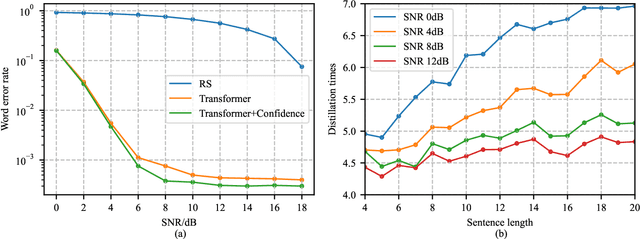
Abstract:Modern communications are usually designed to pursue a higher bit-level precision and fewer bits required to transmit a message. This article rethinks these two major features and introduces the concept and advantage of semantics that characterizes a new kind of semantics-aware communication mechanism, incorporating both the semantic encoding and the semantic communication problem. Within the unified framework, we analyze the underlying defects of existing semantics-aware techniques and establish a confidence-based distillation mechanism for the joint semantics-noise coding (JSNC) problem, and a reinforcement learning (RL)-powered semantic communication paradigm that endows a system the ability to convey the semantics instead of pursuing the bit level accuracy. On top of these technical contributions, this work provides a new insight to understand how the semantics are processed and represented in a semantics-aware coding and communication system, and verifies the significant benefits of doing so.
Augmented Abstractive Summarization With Document-LevelSemantic Graph
Sep 13, 2021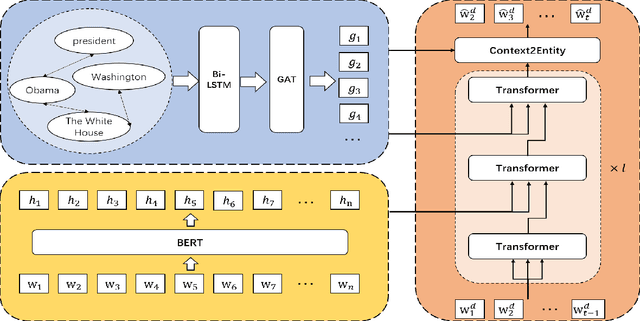
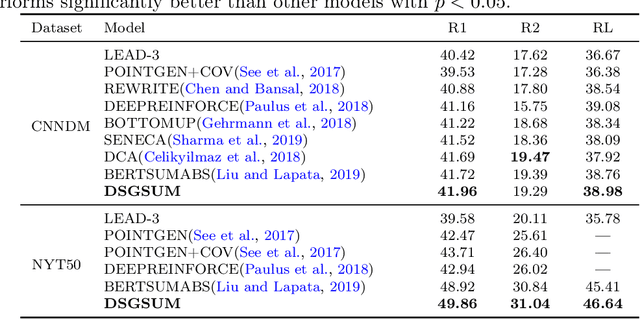


Abstract:Previous abstractive methods apply sequence-to-sequence structures to generate summary without a module to assist the system to detect vital mentions and relationships within a document. To address this problem, we utilize semantic graph to boost the generation performance. Firstly, we extract important entities from each document and then establish a graph inspired by the idea of distant supervision \citep{mintz-etal-2009-distant}. Then, we combine a Bi-LSTM with a graph encoder to obtain the representation of each graph node. A novel neural decoder is presented to leverage the information of such entity graphs. Automatic and human evaluations show the effectiveness of our technique.
Reinforcement Learning-powered Semantic Communication via Semantic Similarity
Aug 27, 2021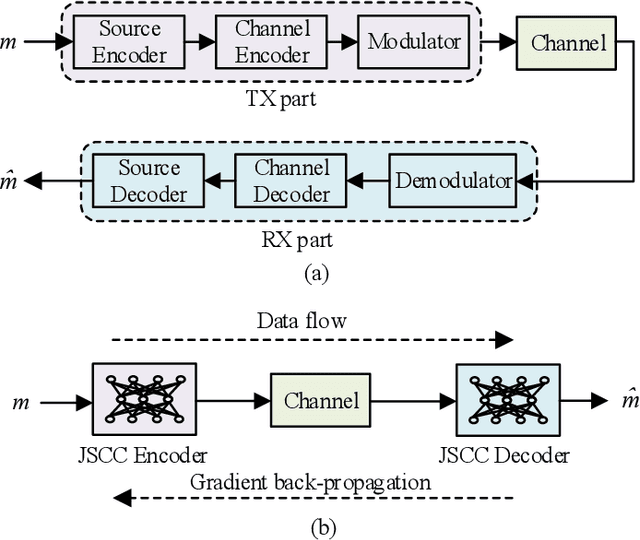
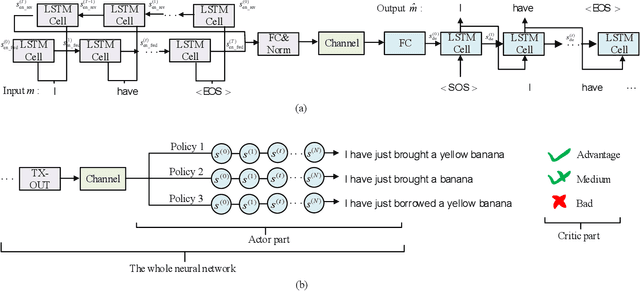


Abstract:We introduce a new semantic communication mechanism, whose key idea is to preserve the semantic information instead of strictly securing the bit-level precision. Starting by analyzing the defects of existing joint source channel coding (JSCC) methods, we show that the commonly used bit-level metrics are vulnerable of catching important semantic meaning and structures. To address this problem, we take advantage of learning from semantic similarity, instead of relying on conventional paired bit-level supervisions like cross entropy and bit error rate. However, to develop such a semantic communication system is indeed a nontrivial task, considering the nondifferentiability of most semantic metrics as well as the instability from noisy channels. To further resolve these issues, we put forward a reinforcement learning (RL)-based solution which allows us to simultaneously optimize any user-defined semantic measurement by using the policy gradient technique, and to interact with the surrounding noisy environment in a natural way. We have testified the proposed method in the challenging European-parliament dataset. Experiments on both AWGN and phase-invariant fading channel have confirmed the superiority of our method in revealing the semantic meanings, and better handling the channel noise especially in low-SNR situations. Apart from the experimental results, we further provide an indepth look at how the semantics model behaves, along with its superb generalization ability in real-life examples. As a brand new method in learning-based JSCC tasks, we also exemplify an RL-based image transmission paradigm, both to prove the generalization ability, and to leave this new topic for future discussion.
An Ontology-Based Artificial Intelligence Model for Medicine Side-Effect Prediction: Taking Traditional Chinese Medicine as An Example
Sep 12, 2018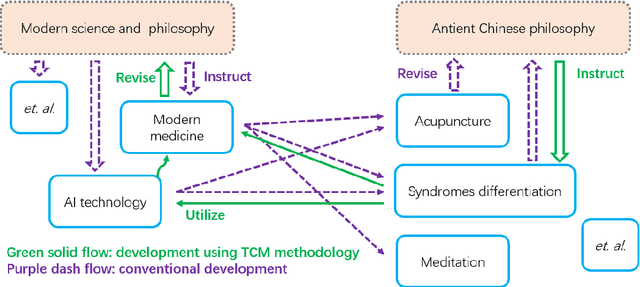
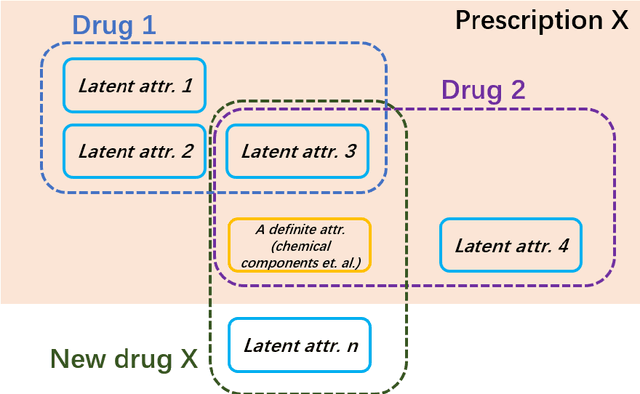
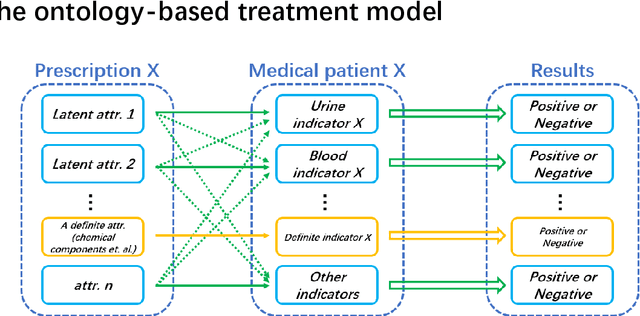
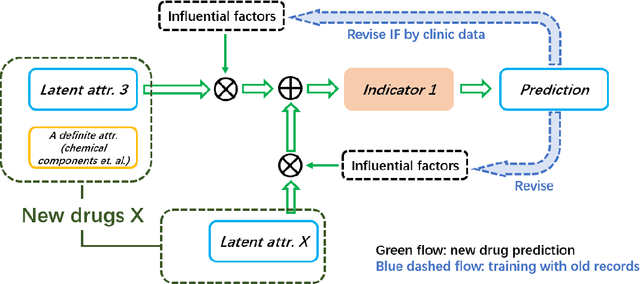
Abstract:In this work, an ontology-based model for AI-assisted medicine side-effect (SE) prediction is developed, where three main components, including the drug model, the treatment model, and the AI-assisted prediction model, of proposed model are presented. To validate the proposed model, an ANN structure is established and trained by two hundred and forty-two TCM prescriptions that are gathered and classified from the most famous ancient TCM book and more than one thousand SE reports, in which two ontology-based attributions, hot and cold, are simply introduced to evaluate whether the prediction will cause a SE or not. The results preliminarily reveal that it is a relationship between the ontology-based attributions and the corresponding indicator that can be learnt by AI for predicting the SE, which suggests the proposed model has a potential in AI-assisted SE prediction. However, it should be noted that, the proposed model highly depends on the sufficient clinic data, and hereby, much deeper exploration is important for enhancing the accuracy of the prediction.
 Add to Chrome
Add to Chrome Add to Firefox
Add to Firefox Add to Edge
Add to Edge